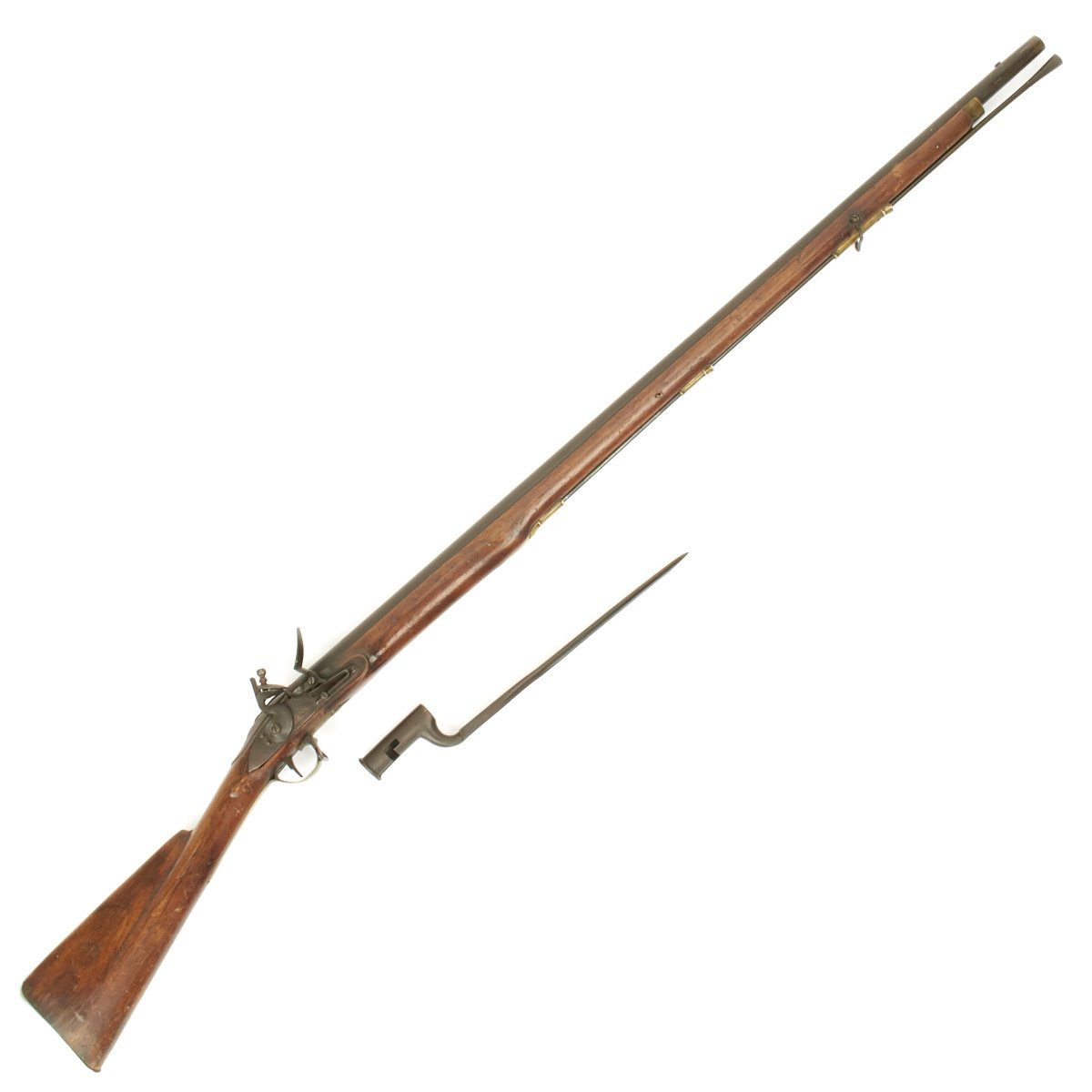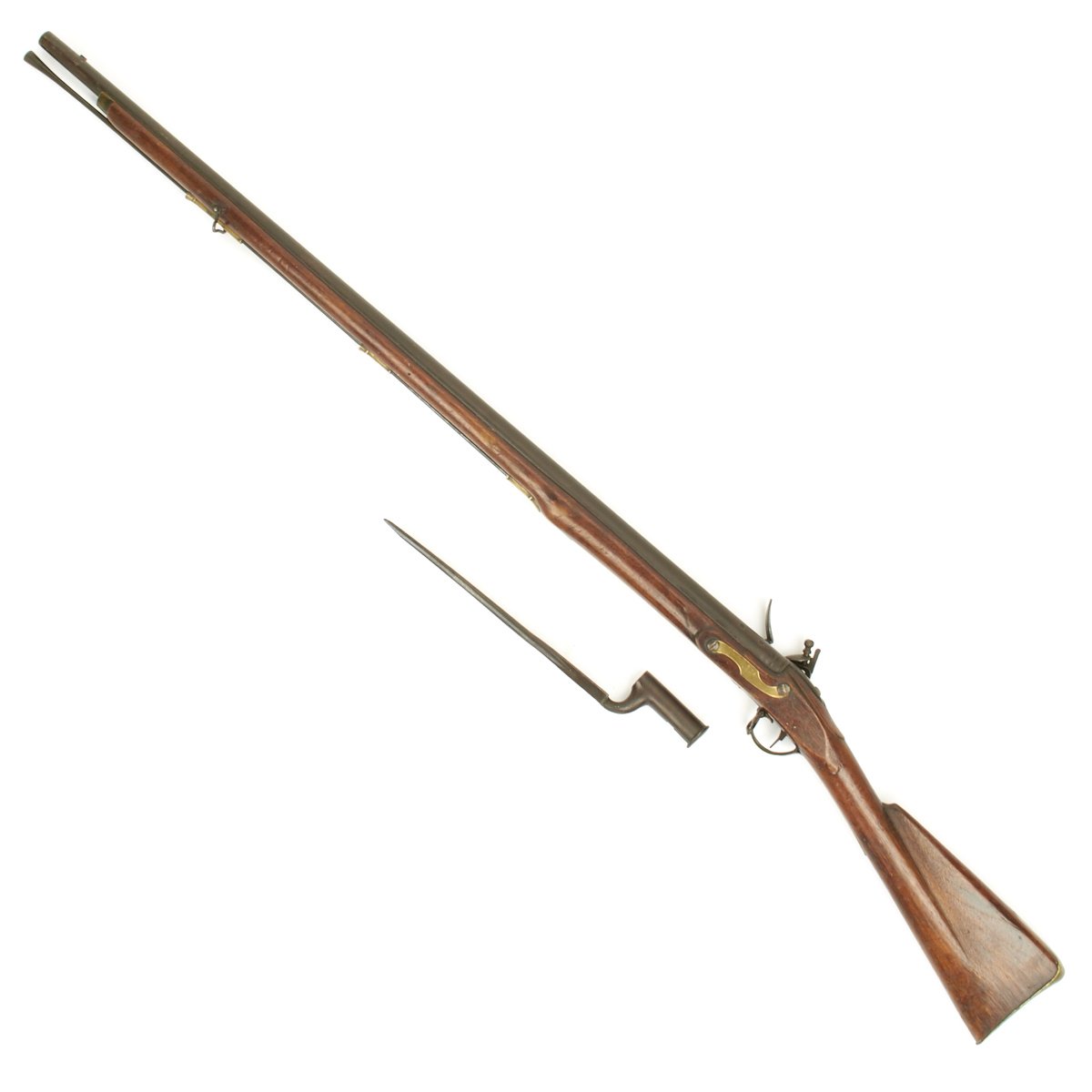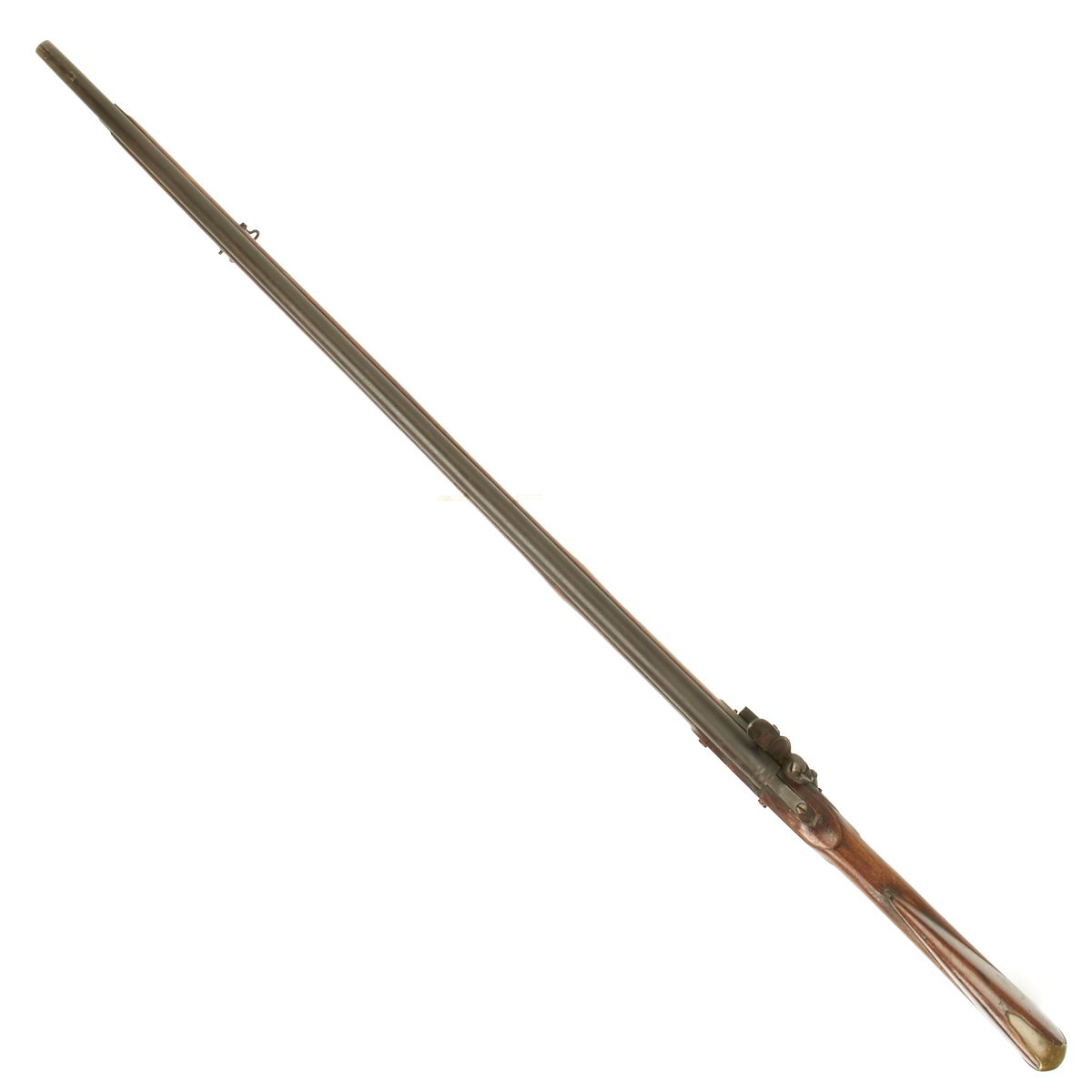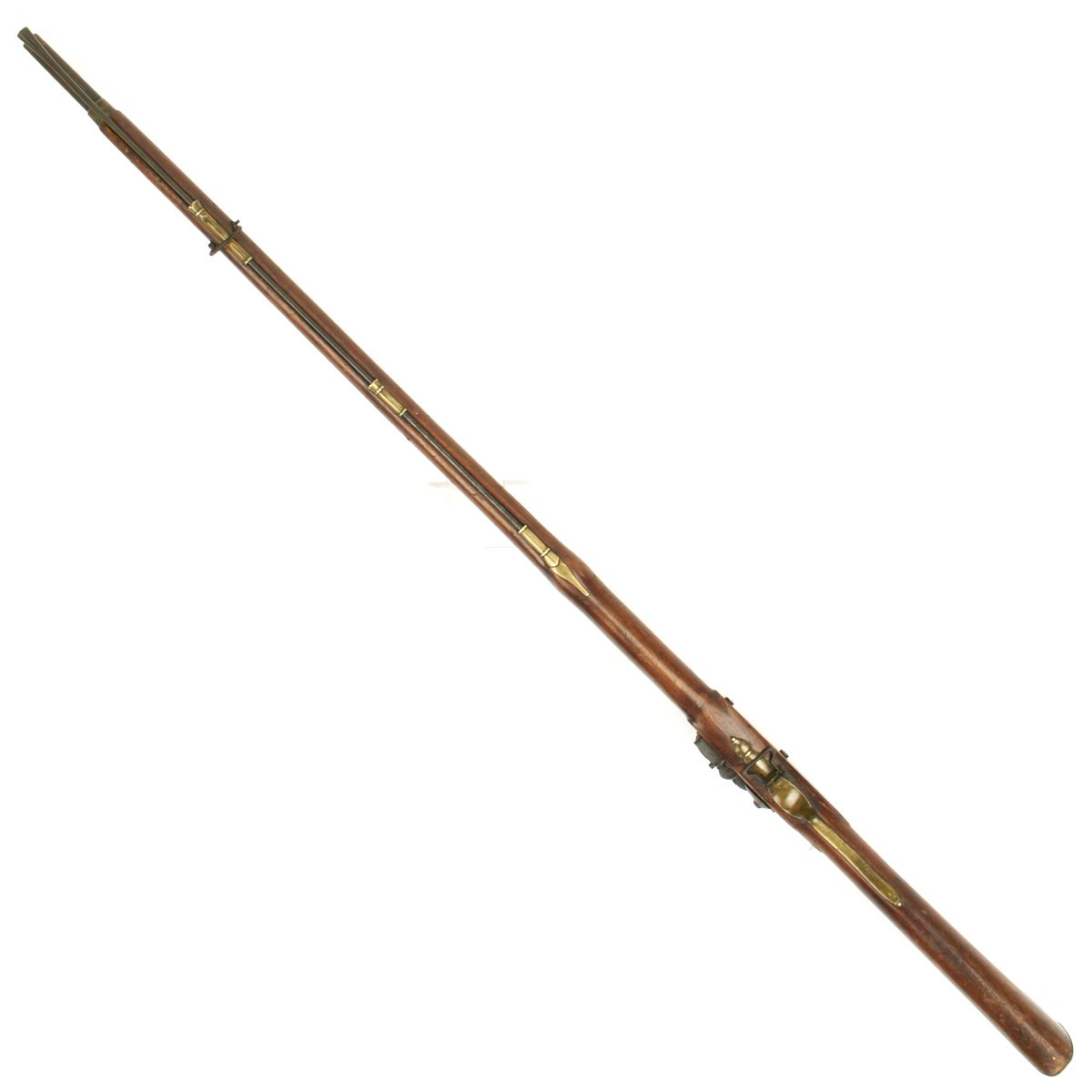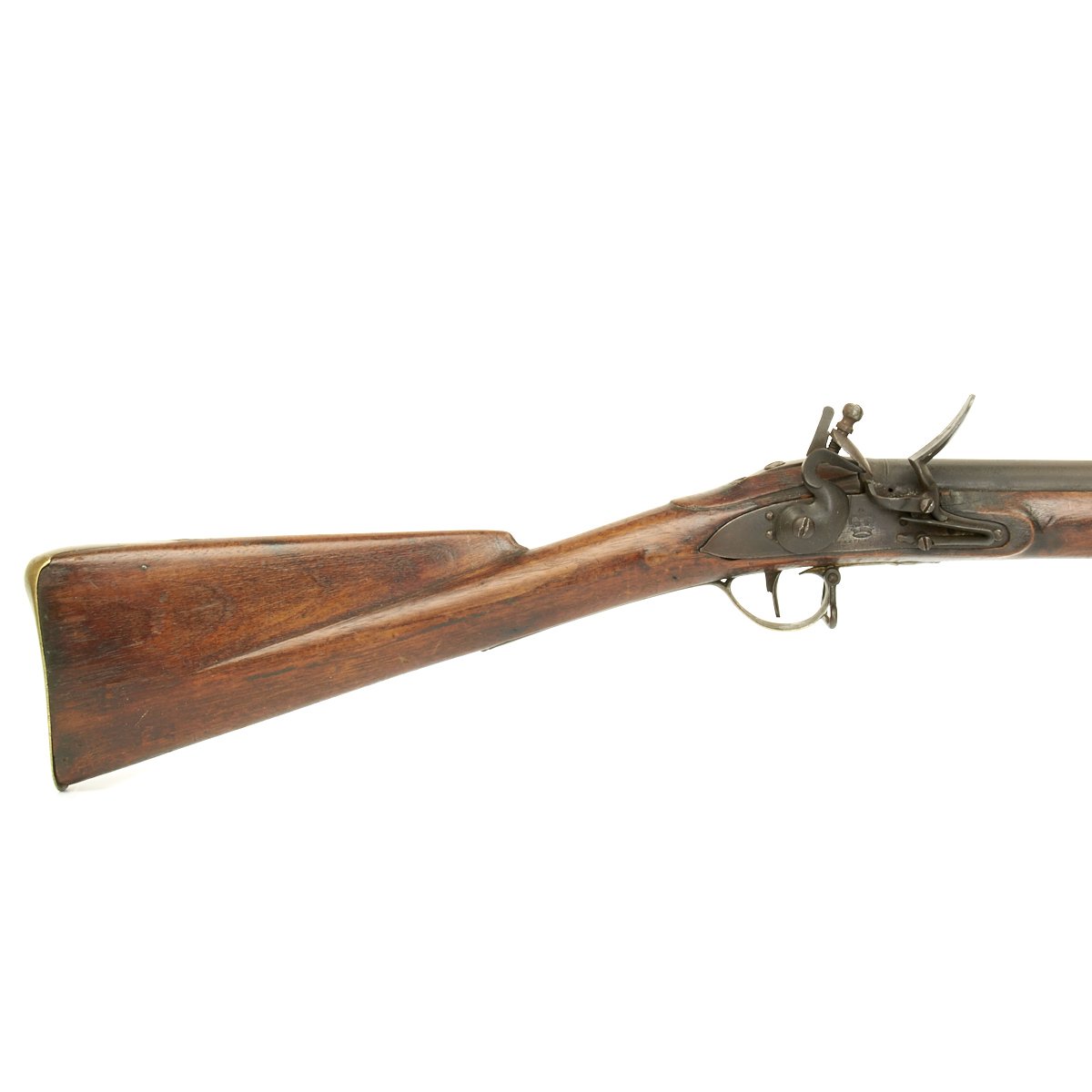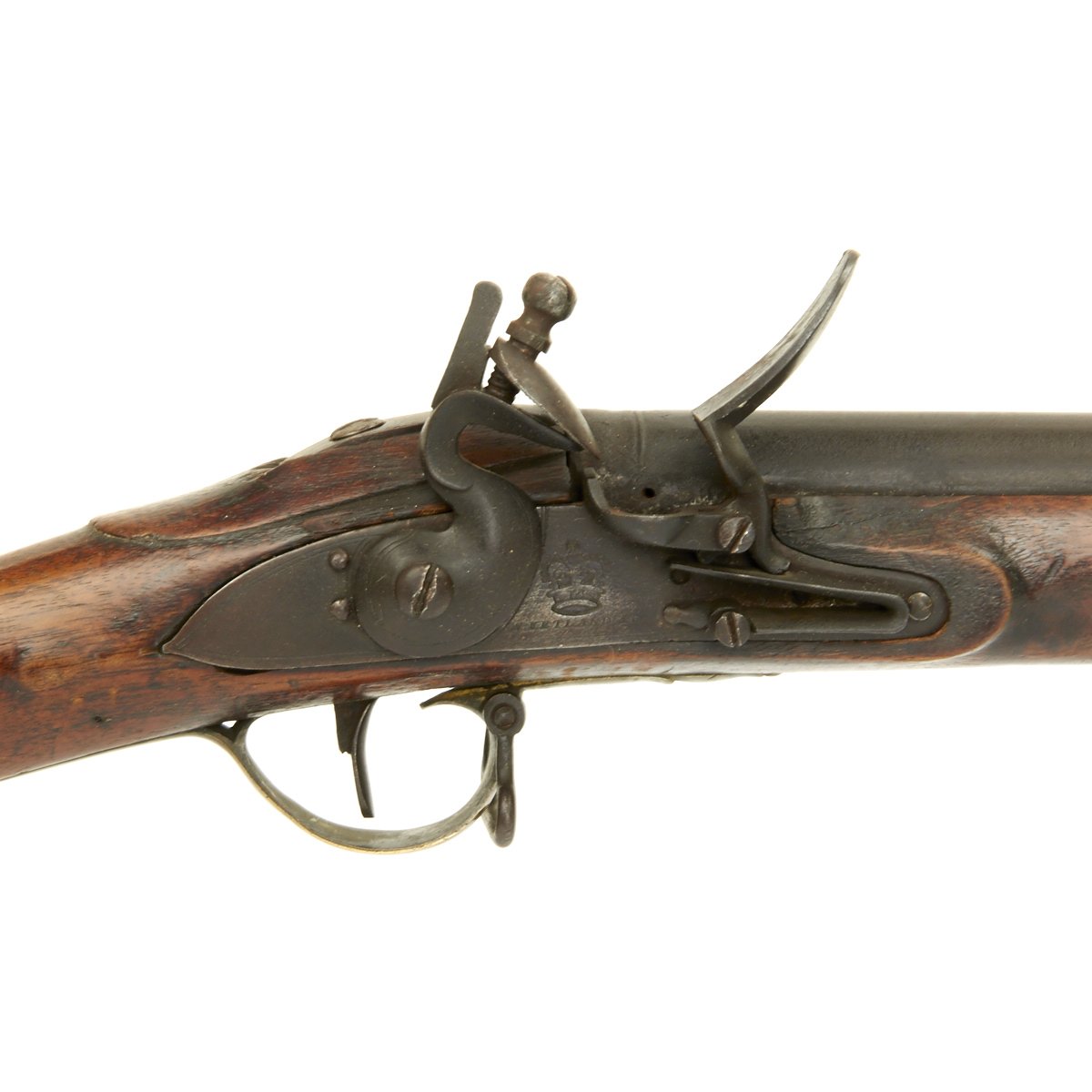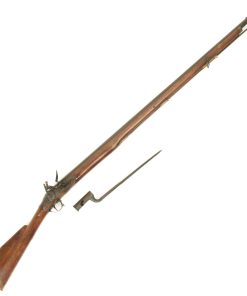Original British 18th Century William Ketland & Company Officer Fusil Flintlock Musket Original Items
$ 1.995,00 $ 498,75
Original Item: Only One Available. The flintlock lock plate of this fine musket is signed W. KETLAND & Co. under a crown. This smaller lightweight musket commonly referred to as a fusil pronounced back then “fuzee”. This musket is in .65″ bore, the same ball size as an officer’s pistol at the time. The style is identical to a regular .75″ Brown Bess musket. Fusils such as these were commercially made and would have been officer’s private purchase weapons. Quite scarce in that only some officers chose to arm themselves with long arms when leading troops into battle.
This fusil has downsized Brown Bess brass mounts as issued from 1740 up until 1796 however the side plate opposite the lock is of differing design which dates this musket between 1780-1800.
The barrel is 40″ in length, slightly shorter than the regular 2nd pattern Brown Bess of 42″, and bears British proof marks. The musket comes with the original matched scaled down socket bayonet which has sustained slight damage half way down the 15″ length where there is a small crack and kink from where some bright spark tried to lever something using the bayonet while attached to the musket, easily restored if required.
Thousands of these types of muskets were exported to the U.S. for militia service as well as for use as ships muskets etc. In the W. Ketland price list they are listed as “muskets with bayonets, steel rods” with slightly different prices depending on the quality of the lock. As to officer’s muskets, there was no official pattern which means that, while many are of smaller caliber, this was not a hard and fast rule. What is consistent is quality and every example we’ve seen displays a level of quality analogous to a good fowling piece by a recognized maker such as this example. There is no reason for a privately owned officer’s musket to have anything like a “rack number”, while some have the owners name, personal crest (if he had one) and regiment on them and there are a few that may be part of a set purchased by the officers of the regiment together.
The salient features of a true officer fusil are high quality, the presence of both a bayonet lug and sling swivels. In comparing 30 period portraits (from the 1750s to about 1812) of officer’s carrying fusils and all of them show both a bayonet and a sling as is seen in this example.
The Gun Maker, William Ketland started business in Birmingham in 1740 and together with his grandson expanded to London later in the 18th century and lasted until the grandson’s death in 1804. The name lived on until 1815 but always as a co-operative arrangement with another maker taking advantage of Ketland’s formidable reputation.
NOTE: International orders of antique firearms MUST be shipped using UPS WW Services (courier). USPS Priority Mail international will not accept these.
Fast Shipping with Professional Packaging
Thanks to our longstanding association with UPS FedEx DHL, and other major international carriers, we are able to provide a range of shipping options. Our warehouse staff is expertly trained and will wrap your products according to our exact and precise specifications. Prior to shipping, your goods will be thoroughly examined and securely secured. We ship to thousands clients each day across multiple countries. This shows how we're dedicated to be the largest retailer on the internet. Warehouses and distribution centres can be located throughout Europe as well as the USA.
Note: Orders with more than one item will be assigned a processing date depending on the item.
Before shipping before shipping, we'll conduct a thorough inspection of the items you have ordered. Today, the majority of orders will be delivered within 48 hours. The delivery time will be between 3-7 days.
Returns
The stock is dynamic and we cannot completely manage it because multiple stakeholders are involved, including our factory and warehouse. So the actual stock may alter at any time. It's possible that you may not receive your order once the order has been made.
Our policy is valid for a period of 30 days. If you don't receive the product within 30 days, we are not able to issue a refund or an exchange.
You can only return an item if it is unused and in the same state as the day you received it. You must have the item in its original packaging.
Related products
Uncategorized
Armored Burgonet Helmet & Polearm from Scottish Castle Leith Hall Circa 1700 Original Items
Uncategorized
Uncategorized
Uncategorized
Uncategorized
Uncategorized
Uncategorized
Uncategorized
Uncategorized
Uncategorized
Uncategorized
Angolan Rebel 1970s era 60mm Inert Display Mortar from Angolan Civil War Original Items
Uncategorized
Armoured Fighting Vehicles of the World: AFVs of World War One (Hardcover Book) New Made Items
Uncategorized
Australian WWII Owen MK1 Machine Carbine SMG Custom Fabricated Replica with Sling Original Items
Uncategorized
Uncategorized
